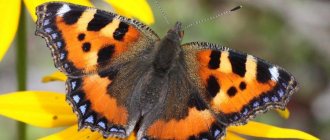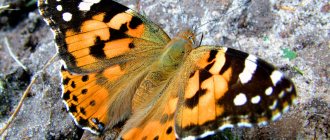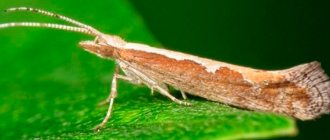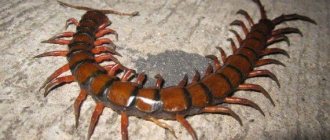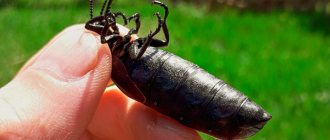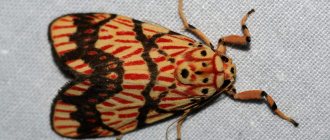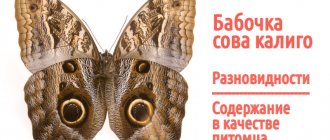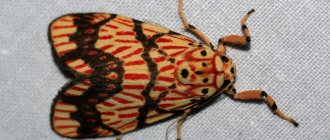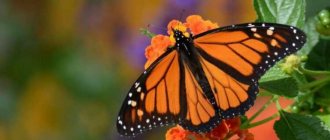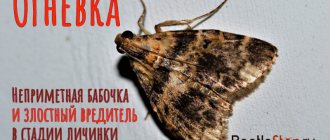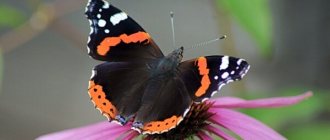- Description of hawthorn
- Life cycle of hawthorn
- Butterflies are relatives of the hawthorn
- Distribution area of hawthorn
- What harm does the hawthorn butterfly cause?
- How to get rid of hawthorn in a garden or country house Mechanical method
- Use of Natural Enemies
- Biological method of combating hawthorn
- Folk remedies against hawthorn butterflies
- Use of pesticides
The hawthorn is a pretty looking and quite large butterfly. It causes a lot of trouble and hassle for gardeners. The butterfly itself is absolutely harmless, as it feeds on the nectar of flowers. But its larvae, which are popularly called caterpillars, cause irreparable harm to such garden crops as apple, pear, cherry plum, walnut, sweet cherry, rowan and grapes.
Let's consider a detailed description of the pest, its life cycle, the harm that comes from it, as well as control measures.
Description of the hawthorn butterfly
The hawthorn butterfly is a fairly large winged insect that feeds on the nectar of flowers. The wings of butterflies are white, with black veins, with a span of about 6.5-7 cm. The most favorable condition for their development is warm weather with plenty of precipitation. More often these butterflies can be found near small bodies of water, in sunny, open places.
caterpillars pose a major threat to the garden . They are small, about 5 cm long, gray, with black and dark orange stripes, covered with small fluffy hairs. At one time, a butterfly can lay 400-500 eggs, from which harmful caterpillars emerge.
Cabbage is a dangerous pest of cabbage heads
Pieris brassicae, wingspan – 45-63 mm
Cabbage grass, or cabbage white, is familiar to every summer resident. You can find it in beds with cabbage, turnips, turnips and other cruciferous crops. The butterfly is fussily looking for a place to lay eggs, from which yellow-green caterpillars will soon appear. During the season, one individual lays up to 300 eggs!
Unprepossessing in appearance, the white hare terrifies with its appearance. You should especially be wary of females, the main difference of which is the black spots on the upper wings.
The voracious caterpillars of the white butterfly eat the leaves and prevent the head of cabbage from forming. After a while, only the veins remain from the leaf. When the food runs out, the pests crawl to new plantings.
How to deal with cabbage and its caterpillars. Safe methods include hand-picking caterpillars and catching butterflies. You can also plant marigolds, marigolds, mint or sage between the rows, which will repel pests. A good way is to cover the cabbage with a mosquito net and agro-canvas so that butterflies cannot lay eggs. Folk remedies will help by spraying 2 tbsp. mustard and 1 tsp. ground red pepper per 10 liters of water. And if there are a lot of insects, use Fitoverm, Karbofos, Actellik or another insecticide.
Photo
You can visually see the hawthorn butterfly in the photo below:
What harm does it cause?
Hawthorn is a garden pest. She prefers to choose plants belonging to the Rosaceae (or Rosaceae) family to feed her caterpillars. And it includes many fruit crops: apple, pear, plum, cherry. Even grapevines, walnut trees, and blueberries are at risk.
Caterpillars eat not only young leaves, but also buds and buds of plants, which causes irreparable harm to them. The amount of harvest is reduced, and the resistance of the trees themselves to frost and disease deteriorates. If the summer is wet, then the hawthorn begins to actively reproduce, and its caterpillars can make the plant completely naked.
Development
For wintering, caterpillars make nests for themselves from damaged dry leaves, entwining them with cobwebs. These nests are clearly visible on branches after leaf fall. If they are not destroyed in time, then in early spring the caterpillars leave their “homes” and begin to destroy the buds and leaves of the plant .
The pupation period of caterpillars occurs at the beginning of fruit formation (late May-early June). The pupae are grayish-yellow in color and are located directly on the trunk or bark of tree branches. They remain in this form for about 15 days, after which butterflies emerge from them.
Butterflies feed mainly on the nectar of weeds, so it is very important to timely weed the soil in the garden.
The emerging butterflies lay eggs on the top of the leaves.
Quite quickly, the caterpillars emerge from these eggs, and after about a month, having destroyed most of the leaves, they again settle down for the winter in nests made of leaves .
Symptoms of the lesion
Determining that a hawthorn is operating on a tree is not always easy. The fact is that at the initial stage, when the buds are just appearing, it is quite difficult to notice the destructive effects of the pest. It is only possible to fully understand that there are fewer leaves on a plant than expected only at the moment of full bloom. But it will be quite late to take action. Therefore, it is very important to know each common pest by sight. So that, having encountered a caterpillar or imago in early spring, you can immediately go on the warpath with them and prevent the fruit crop from being destroyed.
Related species of Hawthorn
The three most common pest butterflies in our latitudes belong to one family of Belyanok:
- hawthorn;
- cabbage butterfly;
- repnitsa.
They are often confused due to their almost identical appearance. However, the caterpillars of these butterflies feed on different plants. If hawthorn can be found only on fruit trees, then turnip and cabbage can be found mainly on vegetable crops.
The apple tree is constantly under the threat of a destructive invasion of all kinds of insidious pests of the orchard. These are dangerous enemies of the tree that encroach on the harvest, or even the life of the plant. Read on our website about small and harmful sapwood beetles, apple and chestnut leaf miners, codling moths, gypsy moths and ringed silkworms.
Harmful relative
Pear peacock eye and its caterpillars
Pear peacock eye or large night peacock eye. It intensifies its activity at dusk. Both the butterfly and the caterpillar differ in appearance. A large moth with a wingspan of up to 155 mm. Color range – white, brown, black. There is a characteristic eye on the wings.
Caterpillars develop from June to August. Large, green, body covered with blue warts and shoots. The female lays eggs on fruit trees; after hatching, the larvae actively begin to feed, which causes irreparable damage. Despite this, the pear peacock eye is also listed in the Red Book.
Pests attack apple, pear, plum, walnut, cherry, sloe, and less commonly ash and elm. Damages trees when there are large numbers of caterpillars. It overwinters in the pupal stage, sometimes twice if unfavorable conditions do not allow the butterfly to emerge.
Females live for about 20 days, at the end of which their ability to reproduce eggs is reduced to a minimum - 3 eggs at a time. Males live a short period of time - 8 days, and die soon after fertilization.
Geographical distribution
The habitat of such a butterfly is quite extensive. It is found not only in Russia, but also in Asia, Africa and Europe.
Most often, this pest of fruit trees prefers to settle in gardens and meadows of the Non-Black Earth Region or Polesie.
The most favorable climate for hawthorn is high temperature and humidity.
Growing at home
To do this, you need to equip a small container; a plastic bottle will do. A foam bedding is laid as a base and food is laid out. Place the eggs on the plants. In a few days, caterpillars will emerge from them.
It is important to make sure they have enough food.
If you follow these recommendations, the individuals will quickly mature and change their color. After this, you will need to prepare a place for pupation. To do this, the pupae need a rough surface. Only on it can they securely gain a foothold.
Do not allow the pupae to attach to the smooth walls of the container. They may not be able to support their own weight and fall. If during this time the butterfly does not have time to open its wings, it can be seriously damaged and die.
The harmfulness of the butterfly
The caterpillars feed not only on leaves, but also severely damage the buds and flowers of the fruit tree. Even one such caterpillar is capable of completely eating about 20-30 leaves in a day. Having destroyed the leaves on one tree, the caterpillars move to another.
In one season, they can damage more than 30% of all leaves of an apple or pear tree. If the fight against this pest is not started in time, then the tree, which has lost most of its foliage, weakens and becomes highly susceptible to disease and frost.
How to deal with it
Methods of combating lacewing
Every year, land owners in many regions are forced to fight this insect. It is necessary to start even before the first leaf blooms. The optimal time is the end of autumn or the beginning of spring. Mechanical methods will help remove damaged leaves. To do this, bushes and trees are carefully inspected for infection and the affected areas are cut off with loppers.
In the warm season, when there is lush flowering of vegetation, the use of chemicals is allowed. The most commonly used are Chlorophos, Metaphos, Entobacterin, Phosfamide. It is better to give preference to biologically based products. Lepidocid Herold, Dimilin, Bitoxibacillin and others are effective. Light traps and pheromone traps are also used.
Natural enemies play a significant role in regulating the lacewing population. The caterpillar is also susceptible to viral and bacteriological diseases. These factors make it possible to restrain the growth of the pest and prevent their uncontrolled development.
Control and prevention measures
To get rid of the hawthorn butterfly, you must first of all destroy all the nests in which the caterpillars overwinter. They are clearly visible after the leaves have completely fallen. They can simply be collected or cut off along with the affected dry branches. When the caterpillars have already appeared, they are shaken off early in the morning onto the litter and burned.
Another natural control method is to attract tits and starlings to the garden , which feed on hawthorn caterpillars.
You can simply collect butterflies that spend the night there early in the morning or in the evening.
In the spring, at the very beginning of flowering, you can treat the trees with special insecticides. For example, karbofos (60 g per bucket of water), chlorophos (20 g per bucket of water) or benzophosphate (2 l/ha). Iskra also helps . Before the kidneys appear, you can use nitrafen .
Bacterial preparations also do a good job of killing caterpillars: Dendrobacillin, Dipel or Entobacterin (2 treatments at intervals of a week). These microbial insecticides have low toxicity to humans, animals or birds, but are effective in controlling pests.
Many gardeners use proven folk remedies to combat hawthorn caterpillars. You can spray the tree with a decoction of wormwood.
To do this, pour 600-700 grams of dried herbs into a bucket of water, leave for a day, then boil for half an hour, filter and add another bucket of water. The resulting decoction is carefully treated with the wood, preferably early in the morning.
Another good remedy is a solution of superphosphate and potassium chloride . To prepare it, 10 grams of superphosphate are diluted in a bucket of water, 5 grams of potassium chloride are added and left for 2 days. Carry out regular spraying of the affected tree every 10 days.
You can pollinate the tree with powder from dried tansy flowers.
Very effective, but no less labor-intensive, will be treating an apple or pear tree with tobacco infusion . Take 500 grams of shag for a bucket of hot water and let it sit for two days. Then they filter, add another bucket of water, 100 grams of crushed laundry soap and the infusion is ready.
Within two to three years, active reproduction of the butterfly stops on its own. But during this period it can cause considerable damage. Therefore, it is important to start fighting this pest on time in order to save your garden and always have a good harvest (read about other apple tree pests in this material).
In early spring, before the buds open, treat the plants with insecticides.
Good results are obtained by treatment with nitrafen (a very strong poison, currently not recommended for use in collective gardens), oleocuprite, karbofos and other insecticides that act on caterpillars. Karbofos is less toxic to humans. Treatment with karbofos gives a good effect. Karbofos or malathion, or malaton, today you can find many drugs in stores under different names, but the active ingredient is the same.
Karbofos is a thick yellow or brown liquid with a very unpleasant odor. Mixes well with water to form an emulsion. It is used as a contact poison to combat aphids, caterpillars, and mites. Karbofos does not affect laid eggs. Also treat plants during the summer feeding period of caterpillars. At the beginning of July! Unfortunately, without treatment with insecticides, it is almost impossible to control the caterpillars.
Nutrition
Hairy caterpillars in most cases eat plant foods - juices of fruits, plants, nectar. However, among them there are predators that eat their own kind - weakened, diseased larvae, butterflies, other small insects, and aphids.
- Polyphages are absolutely indiscriminate in their food, eating almost all vegetation. They lead a predominantly nocturnal lifestyle.
- Oligophages eat plants of a certain species or genus. Thus, the caterpillar of the swallowtail butterfly feeds exclusively on umbrellas.
- Monophages live and eat one plant. If a particular shrub is heavily infested, other plant species adjacent to it remain completely safe.
- Xylophages do not eat anything except wood. This group of caterpillars is always distinguished by a large number of individuals in one brood.
The transitional form is furry creatures that eat tinder fungi and lichens. A separate group includes keratophages, which feed on elements of animal origin - horny cover, wool, skin, hair.
Furry caterpillars
The hairy caterpillar butterfly is an ancient inhabitant of our planet, whose roots go back to the time of dinosaurs. There is a huge variety of larvae in the world, distinguished by their unusual appearance and the presence of body hairs of different lengths. A photo of the furry caterpillar is presented below.
What plants repel pests in the garden. Plants – protectors from garden pests
Phytoncides are often used to protect garden and vegetable plants. At the same time, the method of protection is simple, harmless to beneficial insects, warm-blooded animals and humans. It is advisable to use it in conjunction with other methods (insect traps, etc.) Phytoncides protect plantings without special care. They quietly do useful work and sometimes pleasantly diversify the floral decoration of the area.
There is practically no scientific data on the mechanisms of volatile plant emissions on insects, and so far everything is based on practical experience and the knowledge that phytoncides have a detrimental effect on some pests.
Let's list just a few common plants?
Legumes (beans, beans, peas) repel wireworms, that is, the larvae of click beetles, so named because of the hardness of their integument. Usually, moles do not settle in areas planted with beans.
Elderberry planted among gooseberry or currant bushes protects them from moth caterpillars. Plum trees and apple trees growing near elderberry bushes suffer less from codling moths - small butterflies from the family of leaf rollers, whose caterpillars damage the fruits. Perennial carnation saves the area from the invasion of mole crickets.
Helleborus, or hellebore, is a perennial herbaceous plant from the buttercup family that repels rodents. Where hellebore grows, there are no harmful insects.
Hemerocallis (daylily) is a beautiful herbaceous perennial that saves many bulbous plants, especially lilies, from millipedes. Their larvae and adults feed on fallen parts of plants in the summer and gnaw on the bulbs in the winter.
Geranium (more correctly pelargonium), growing in your room, guarantees protection from aphids and spider mites to all other indoor flowers.
Mustard planted near pea beds protects them from the pea codling moth. It has also been noticed that weeds very rarely appear around mustard.
Calendula (marigold), growing among asters, protects them from fusarium, a common fungal disease. The causative agent of fusarium remains in the soil for a long time in the form of spores that germinate under favorable conditions. Through coria, the fungus enters the plant and poisons it with its toxins. Signs of the disease: brownish-brown streaks appear on one side of the stem, which then turn into cracks; the plant bends and withers. Calendula also helps fight nematodes. This almost transparent, tiny worm quickly multiplies in the roots of berry bushes, strawberries and flowers. Plants affected by the nematode usually die. But if, for example, you plant a border of marigolds around roses, the flowers will be saved from nematodes.
Hemp protects beets from the beet flea beetle, and peas from pea aphids. The smell of hemp repels the larvae of cockchafers, so it is recommended to plant it between the rows of shelterbelts.
Coriander (coriander) is even better than hemp at repelling pests from fruit trees. It is planted in tree trunk circles and it is recommended to trim the tops weekly - this increases the release of phytoncides. It is also useful to plant coriander among flowers. In particular, it completely protects roses from aphids. If coriander grows in your garden, then mice will not come to you. In autumn, cut coriander stems should be laid out in rooms that need to be protected from winter visits from mice and rats. There won't be any wet here.
Onion. Who hasn’t heard the popular saying: “onion cures seven ailments”? This is also true for plant diseases. Take, for example, one of the most dangerous fungal diseases of roses - the so-called powdery mildew. Bushes on which a grayish-white powdery coating of fungal mycelium has appeared die: shoots stop developing, leaves curl, and buds wither. Powdery mildew usually appears at the end of June and does not leave flowers alone until late autumn. So, spring onions and leeks protect roses well from destructive dew. Strawberry lovers should also take advantage of the onion, especially those who annually suffer from gray rot, which turns the berry into a nasty gray rotten mass covered with the finest fluff. Onion planted in a garden bed (an onion bush for four strawberry bushes) will greatly reduce the incidence of berries not only with gray rot, but also with other diseases. Onions will repel weevils, ticks, etc. wireworms and other pests. And of course, not only from berries. For example, currants are not attacked by bud mites if onions are planted between the bushes and left on the ground for the winter.
Common tree diseases
In addition to pests, diseases can worsen the yield of fruit trees. As a rule, the cause is a fungus.
Scab
Scab is a disease in which leaves and fruits become covered with cracks, abscesses and crusts or spots of olive or black-brown color. The causative agent is pathogenic fungi and microorganisms.
Black cancer or Antonov fire
Black cancer or Antonov's fire is a dangerous disease that affects branches, flowers, fruits, trunks and leaves. It is caused by a fungus whose spores overwinter in fallen leaves and mummified fruits and the pathogen remains viable for a long time. The bark swells, lags behind the tree and cracks, as if burned by fire. Signs of damage are brown, wrinkled petals on the buds. With such a lesion, the stamens and pistils become black.
Rot or moniliosis
Rot or moniliosis. The disease is caused by a fungus and spreads through spores. There is a spring type of moniliosis, when the death of peduncles and flowers occurs, drying out of the branches, as well as an autumn type of fruit rot, which causes damage to ripening apples.
Powdery mildew
Powdery mildew is a fungal disease that affects leaves, young branches and inflorescences. The pathogen overwinters in the soil around the tree trunk, on branches and on the trunk of a tree. The external manifestation is a white coating on the leaves of the apple tree.
Rust
Rust is a fungal disease that appears on the leaves in the form of small yellowish spots, which grow over time and take on a bright orange color. The spores suck moisture from the entire vegetative mass of the tree. In severe form, this disease affects the bark and branches of the tree.
Diseases and pests of apple trees worsen yields
